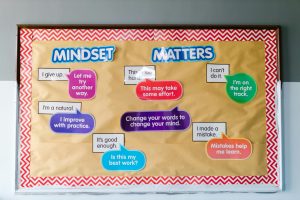The quiet challenge of teaching critical media literacy today
In today’s digital age, the media landscape is constantly changing and evolving with the rise of social media, fake news, and clickbait. As a result, there is a growing concern about the impact of media on our society and the need for critical media literacy. However, the challenge of teaching critical media literacy often goes unnoticed and underplayed in our education system. While it may not be as loud or prominent as other pressing issues in education, the quiet challenge of teaching critical media literacy is one that cannot be ignored.
Understanding Critical Media Literacy
Before delving into the challenges of teaching critical media literacy, it is important to first understand what it entails. Critical media literacy is the ability to analyze, evaluate, and understand media messages and their influence on society. It involves being aware of media biases, stereotypes, and manipulations, and being able to critically consume media content.
In today’s media-saturated world, where information is readily available and easily accessible, critical media literacy is more important than ever. It is not only about being able to distinguish between fact and fiction, but also about understanding the power and influence of media on our thoughts, beliefs, and behavior.
The Underplayed Role of Critical Media Literacy in Education
Despite the crucial role of critical media literacy, it is often overlooked in our education system. Many schools still prioritize traditional literacies, such as reading and writing, over critical media literacy. This can be attributed to the lack of understanding and recognition of its significance in shaping a well-informed and responsible citizenry.
Furthermore, there is a lack of resources and trained educators to effectively teach critical media literacy. Many teachers may not feel confident enough to tackle this subject or may not have the necessary training and knowledge to do so. As a result, critical media literacy is often relegated to optional or one-off lessons, rather than being integrated into the curriculum.
The Challenge of Keeping Up with the Ever-Changing Media Landscape
Another challenge of teaching critical media literacy is keeping up with the constantly changing media landscape. With new platforms and technologies emerging, it can be difficult for educators to stay updated and relevant. By the time a lesson or curriculum is developed, it may already be outdated or irrelevant.
Moreover, with the exponential growth of social media, there is a constant influx of information and media content, making it even more challenging to critically evaluate and analyze each and every piece of media. This can be overwhelming for both students and teachers.
The Importance of Collaboration and Dialogue
In order to effectively teach critical media literacy, collaboration and dialogue are essential. This is not a subject that can be taught in isolation or through lectures. To truly understand and internalize critical media literacy, students need to engage in open and critical dialogue.
Furthermore, collaboration amongst educators, parents, and the community is crucial in creating a comprehensive and effective approach to teaching critical media literacy. It is a subject that requires a multidisciplinary approach, drawing from media studies, psychology, sociology, and more.
The Quiet Challenge with Loud Consequences
Despite its underplayed role, the consequences of not teaching critical media literacy can be loud and far-reaching. With the spread of misinformation and the rise of hate speech, the need for critical media literacy is more pressing than ever. Without the ability to critically analyze and evaluate media content, individuals may fall prey to propaganda and manipulation, leading to negative impacts on their beliefs and actions.
Moreover, by neglecting to teach critical media literacy, we are also failing to equip our students with the necessary skills to succeed in the 21st-century workforce. The ability to critically consume media is not only crucial for responsible citizenship but also for professional success.
In Conclusion
In conclusion, the quiet challenge of teaching critical media literacy today must not be overlooked. It is imperative that we recognize the significance of this skill in our ever-evolving media landscape and take steps to prioritize and integrate it into our education system. By doing so, we not only empower our students to be informed and responsible citizens, but also prepare them for success in the digital age.










